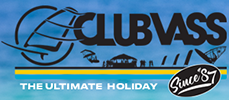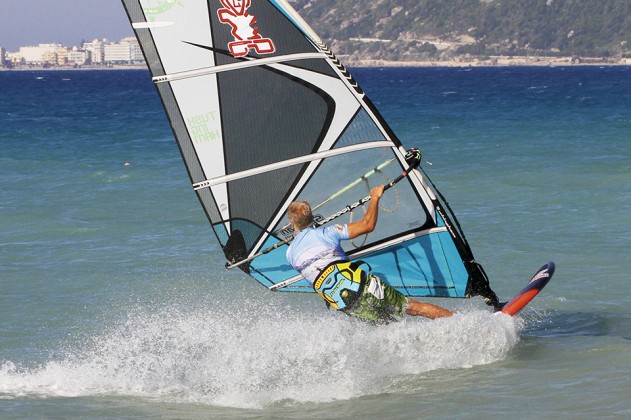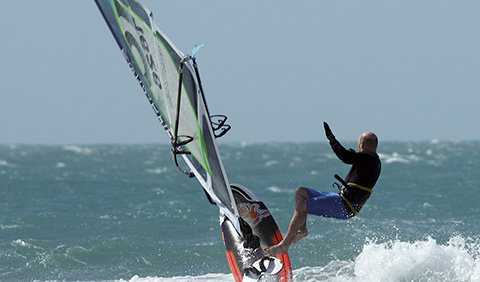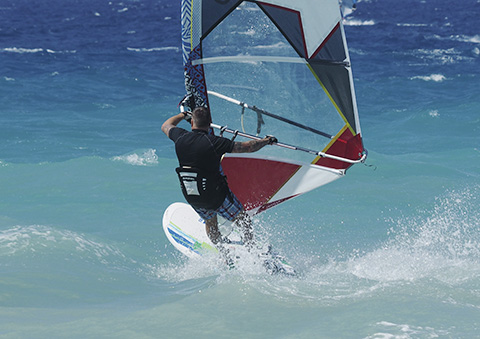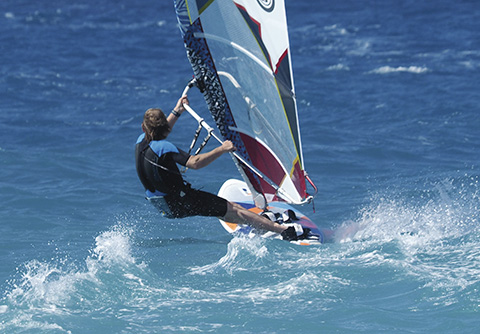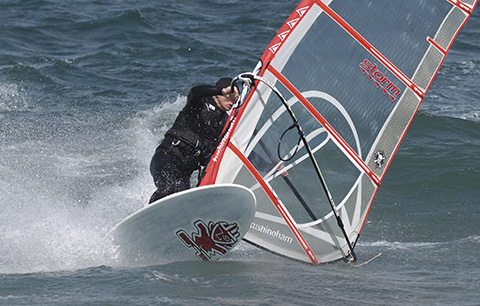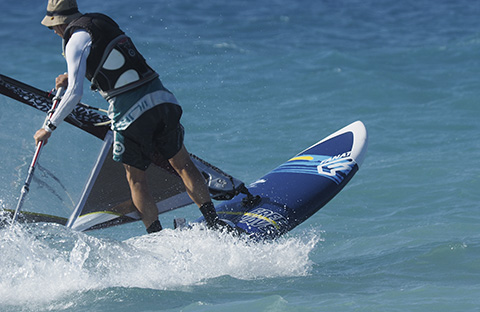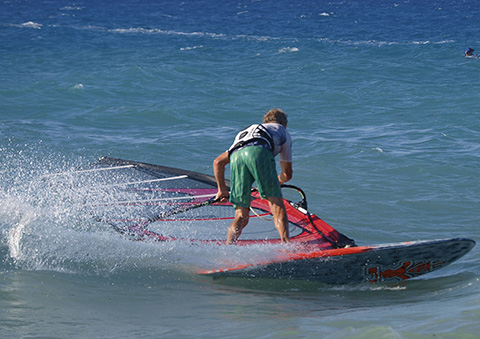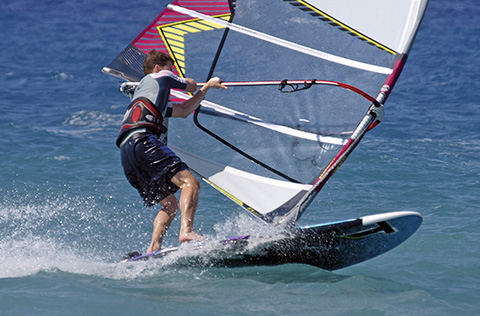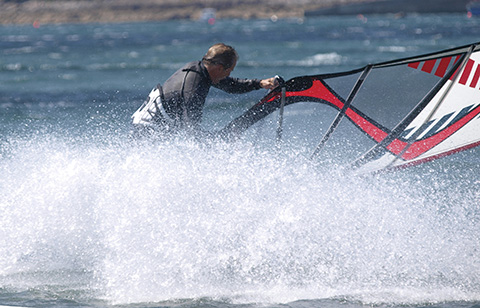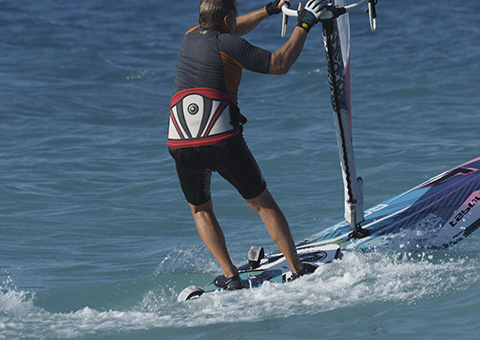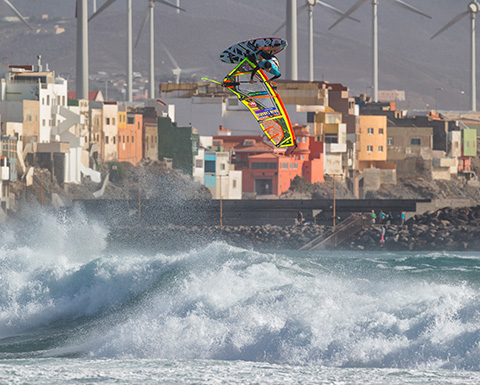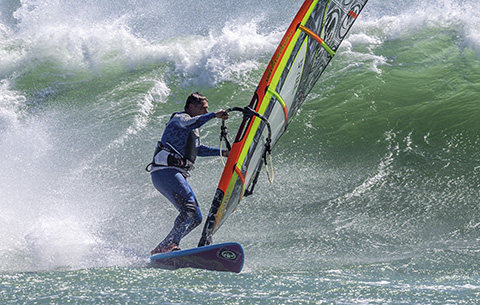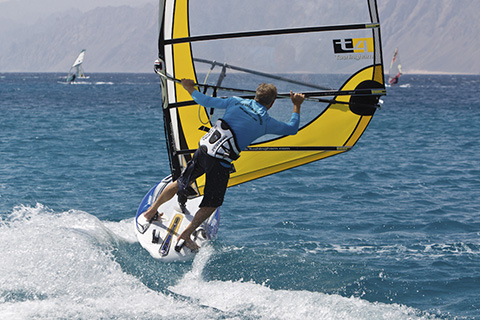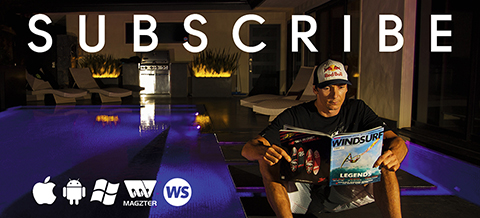ARE YOU GETTING WORSE?
Words Peter Hart // Photos Graham White, Peter Hart, John Carter & Dave White.
Surely the longer you plug away at this game, the better you’re going to get. If only … Amateurs are no different from the elite in that they too suffer dips in form. Moves they could once do with their eyes shut suddenly elude them. It’s frustrating beyond belief. What is going on? Peter Hart investigates how and why bugs get in the system and what you can do about it.
Poor old Tiger Woods. It’s like someone has attacked the Sistine Chapel with a spray can – greatness has been horribly tarnished. He numbers among the very few athletes who have managed to transcend their sport. Even if you don’t give a toss about golf, you are surely aware of his former dominance in a game which through its multiple variables and luck factor, is notoriously hard to dominate.
At a time when golfers were often chubby, awkward and chronically dressed, Tiger bestrode the fairways like an ebony Achilles on the catwalk – a fearsomely ripped athlete blending power, immaculate technique, the deftest touches, mental fortitude and an unshakeable belief. Then suddenly the walls came tumbling down. Last month the top amateur beat him by nearly 15 strokes at the British Open.
The reason for the descent appears multifactorial. Exposure in the press as a serial philanderer leading to the break up of his marriage, burst the all American, clean-cut bubble and surely deflated his mental infallibility. Then followed a series of injuries. Many sportsmen come back from injuries. However, the most recent has been to his back, which has forced him to totally remodel his swing. All that muscle memory had to be … forgotten … and then re-remembered. Are you spotting any windsurfing parallels yet? Have you noticed new holes in certain aspects of your game? If so, do you have a clue how and why they’ve appeared? I’m not suggesting for one moment your marriage has been rocked by having an army of call girls on tap in Las Vegas; but has a certain incident, on or off the water, made you cautious, more defensive, less confident?
Has an injury forced you, perhaps unconsciously, to protect a certain body part? Or have you, for no discernible reason, just picked up a bad habit, which has knocked you back down a level?
We expect the odd period of stagnation – but to get worse! That’s often too much for many to bear and eventually persuades them to seek out a drier, more rewarding recreation. So here are a few of the possible causes and remedies gleaned from coaching courses and personal experience.
Not getting better is one thing. We can live with that. But getting worse…
// However benign the conditions may appear, if you’re in any way anxious, you’ll push the eject button prematurely and get defensive – and that’s when the bad habits take hold.
FOR BETTER FOR WORSE
There’s an old coaching mantra that it’s far harder to eliminate a bad habit than it is to teach something from scratch. There’s a hint right there. When something starts going wrong, the best approach is to sweep it right back to the fundamentals. Don’t get bedevilled by the details but check the basics and build up from there – and when we say basic, we mean really basic – like the venue.
SHAPED BY THE KIT
For better or for worse, your set up and kit choice determine your posture. In the pic below the large sail (for the conditions) is set with very little tension so it’s pulling like a tractor. Arguably it suits the well-muscled character in charge, whose well spread hands and bulging arms reveal that upper body strength rather than the harness are doing most of the work. It’s fine … but should he swap to a smaller, softer more move-oriented sail, in order to improve the corners and his general rig handling, he will probably regress.
// Set up to heave – it’s working but it’s encouraging a destructive habit.
TECHNIQUE HANGOVERS
A history of trashes and crashes, or just one deeply over-powering and mildly traumatic session, can encourage a defensive bad habit that can linger in the system. The most common is the front hand position. The front hand creeps forward on the boom when safety is threatened because instinctively it knows it only has to pull in slightly to depower the sail. However, it’s a glitch that infects so many moves. It leaves you too close to the boom; makes you draw the rig back and head up as you step back into the straps and as you waterstart – to name just a few.
// Mike, a polished allround sailor, got infected with the front hand habit and had no idea he was doing it.
// The front hand position destroying the gybe. One slight pull depowers the rig, lifts the nose and stalls the rail.
WRONG PLACE
Bigbury is a gorgeous wave sailing beach on the south Devon coast and if you live in the area you are indeed privileged to have it as a local spot – but I never sail well there. It’s a personal problem. It’s where I learned to surf as a nipper. Aged 12 I went out on a day, which was literally way too far over my head. I got cleaned up by a big set.
My leash broke and I was caught in the infamous rip that sweeps out around the rocks at the Bantham end. I managed to swim out of it, bodysurfed in … but not far enough. I was caught again and did three more circuits before, almost mortally exhausted, I touched sand. I’ve had worse since but perhaps because I was so young and impressionable, the dread remains indelibly imprinted and every time I launch there, dormant alarm bells start to ring and I tense up. Anders joined me for a clinic in Dahab a few years back. Conditions were excellent but he never sailed with a smile and didn’t hit the markers of earlier planing and faster gybes he’d set himself at the beginning of the week. In fact, he regressed, his sailing becoming ever more stilted.
He returned four months later but this time to Mauritius and was a different bloke – laughing and joking on the water, chucking himself at it and really taking up the angles necessary to nail the gybes. The difference was simply wind direction. In Dahab the prevailing wind is offshore. Anders confessed over a beer that he’d never sailed in offshore winds before and the dread was instinctive and mighty. But he was loathed to admit it at the time because, everyone else was happy and he knew his fear was disproportionate given his competence, the flat water and the ample safety cover. In Mauritius the wind is side-shore and he launched with a free heart and a happy head.
NEW KIT, OLD KIT
Retail therapy can be the improver’s best fillip. The new tennis racket, the new carbon sandwich freestyle wave – they fill us with joyful expectation and make us attack with renewed vigour. However, a new piece of windsurfing kit may feel and behave differently. And if you’re not open to change, then expect to get worse before you get better.
BACK HAND FRONT HAND?
Geoff, a competent free-rider of some year’s experience, was looking to expand his windy repertoire into some basic freestyle. So he traded in his ancient 6.0 twin cam for a light, modern cross-over freestyle/wave sail – and got steadily worse. He would have practised some of those new moves if only he could have got going. The new rig only got him planing in the biggest puffs at which point he was too ‘on the edge’ to even think about trying anything new and risky.
The issue was that Geoff was a ‘back-hand’ sailor. His back hand was his accelerator. When he pulled on it, his old tight-leeched sail pulled back, providing solid resistance and instant power. But his new, softer, ‘flickier,’ more reactive rig, didn’t offer such a solid counterbalance and he kept falling against his back hand and over-sheeting.
He needed to sail more off the front arm; push rather than pull to power up; go with the flow rather than resist – stand up rather than hunker down.
It was totally alien and asked him to completely change his oppositional relationship with the power, which for a long time he was reluctant to do.
HABIT CURES – DO WHAT IT SAYS ON THE TIN
If you’re getting worse at a certain move, it’s likely you’ve got caught up in fine detail, are over-thinking and are ignoring a very basic element. There’ll be a clue in the title. For example in a carving 360 and a carve gybe, you have to carve. To do a duck gybe, you have to duck. To do a fast tack, you have to tack … yes you’ve guessed it … fast! Remake the omelette – but this time break some eggs!
// The carving 360. It’s all too easy to start thinking about how and where to lay down the rig – but if you stop carving, it’ll never happen.
// Focus on speed, constant rail pressure and drawing a steep, ever tightening arc and the rig will look after itself.
// It only takes one scrape in the mush from the foot of the sail when duck gybing, to persuade you to throw the head back out of the way, thereby losing vision and commitment.
// But if you think about ducking, you naturally move to the inside, keep carving AND get an instant view of the new side of the boom.
// Once the gybe rig change becomes a mental issue, people tend to stand up, look at it and stop carving – a guaranteed way to make it worse.
BACK FOOT FRONT FOOT
Jez’s wave sailing has got worse since he swapped his single fin for a Quad. He’s a good bloke but couldn’t be more set in his ways if you buried him in concrete. He’s a back foot sailor. It’s not a criticism. It’s a style. He planes early, is light on his feet but in keeping with the first generation wave boards, he turns off the tail and uses his back foot exclusively to carve.
That works on the single fin board, which was longer and had a meaty pivot point (the fin) – but on the Quad, with its shorter, wider, curvier outline and titchy fins that are not designed to withstand heavy shock loads, he just skids and over-rotates. The problem is he sees it as a positive and calls it ‘looseness.’ But he’s barely moving and stops completely after every turn.
The Quad is all about carrying speed through the turns by dropping forward onto the front foot and using the whole rail to turn, at which point the side fins offer extra drive. It’s a massive shift for him and one that he isn’t going to make. But he’s happy – for a while anyway.
SET-UP TO GET WORSE (BEWARE THE LOFTY BOOM…)
Imagine you’ve spent years of your life lovingly restoring a classic car. You take it to the garage for an MOT and when you collect it, you’ve found the mechanics, for no good reason, have added a spoiler, wide wheels and a horn that plays “I’m sexy and I know it…” That’s how the coach feels when one of his charges, who’s he’s set up perfectly for his style and standard, returns a year later with a ridiculously inappropriate stance from being poisoned by some trendy at his local spot with a one track freestyle mind.
The trend for a crazy high boom (mouth height and above) has seen the deterioration of many a carve gybe and wave ride. The high boom favoured by freestylers leaves them upright over the board in the best position to get planing with a small sail and drive down and ‘pop’ the board into a trick. Dedicated freestylers don’t do a lot of carving. The high boom upsets your carving in two ways.
1. You’re too upright to bend the knees. It’s only by bending the knees and getting low that you can keep constant pressure on the inside edge.
2. You end up under the boom and can’t lean the rig into the turn. It’s by dropping onto it that you load up the mastfoot, control the nose, engage all the rail and stop it bouncing.
Worse still an over-high boom can be very tiring, pulling up in the waist harness and forcing you to take a lot of pressure on your arms.
The general trend for higher booms and longer lines (shoulder height and lines which accommodate elbow to palm) is great in that in helps early planing, distances you from the rig and puts you in a tall ‘ready to drop’ stance. However, unless you’re an extremist, avoid the extremes.
If you’re going to change your set-up, do it gradually. If you go from a nipple high boom and 26” lines to mouth high boom and 34s, you’ll basically have to learn to windsurf all over again. Make gradual changes so you stay in touch with what you know.
KIT INFLUENCE – GETTING VERY TECCY
In the earliest days of freestyle, the duck tack was THE manoeuvre you were judged by – not particularly spectacular but very technical. The timing of the duck and the angle of the throw all have to be perfect. The room for error is zero. I cracked it one winter in Barbados. Then came home to find I hadn’t – especially galling since I’d told everyone I had.
The reason turned out to be a change in sail design. The new sail had more shape and less tension in the back. It was only marginal, but as I released the rig, it didn’t neutralise as well as the old one so the wind caught the other side and slammed it.
A high proportion of modern tricks start with a sail duck so you initiate the trick back-winded and boost out of the water by pushing on it (not pulling).
Being able to duck the sail sweetly at full planing speed (without losing any) is therefore crucial; and to that end sail design is critical. James, a top Vass freestyler in Vassiliki, was telling me he began to struggle with a trick on one tack because his new sail didn’t duck so well on that tack – because the battens of his new sail were laid on the other side.
It’s marginal but many sails, due to the batten lay-out, do rotate better and power up more crisply on one tack; which is why on some designs the battens are laid on alternate sides and on the very latest, the battens actually dissect the sail so it’s perfectly symmetrical.
The atmosphere is getting a bit rarefied but if you start struggling with a move you could once do, it could be down to how the sail depowers and behaves during the transition.
GETTING WORSE THEN BETTER WITH SKYEBOY
“I think the worst case of getting worse I had was when learning push loops. By chance my first feeling for the move was the right one, so from day one they just worked really well. However after about one year of doing them well, they all started going wrong. I think I started to think a bit about what I was doing and they went to pieces. I was mostly over rotating, so I tried to slow them down and then under-rotated and had a nasty crash into the sail. In the end it took a top tip from Andy King about my arm position to snap them back into place and since then it has been my most reliable move. For me when things start going in the wrong direction one of the best tips I have is to stop sailing. Go stand on the beach for 10 minutes and enter the water again like it’s a new day. Quite often that system reset is enough to make everything work again.”
// Skye boy, having taken a rest to reboot. Photo Carter / pwaworldtour.com
HUMAN FACTORS
But let us not beat about this bush. The fault for gradual or sudden deterioration usually lies with the physical self. I banged on about this last year but physical fitness, a lack of it, is often the culprit.
Consider these situations.
BIGGER, WEAKER… WORSE.
If you put on weight, you have to select kit that fits your new size but not your strength. Carrying a surplus of sail and litres you quickly find yourself fighting the kit as you bear away up to speed, which spawns ugly, back seat habits.
When you’re unfit, the first thing you do is stop bending your knees. The legs have the biggest muscles so it’s less tiring to keep them straight, whereupon many bad things ensue.
• you lose the use of those big leg muscles and with it the ability to suddenly extend the legs and explode into moves like tacks and jumps.
• with the legs locked you can’t bend to absorb shock loads.
• with the legs straight you end up balancing with the upper body, throwing head and shoulders around and pecking at the waist in a boogie of reaction and over-reaction.
As a study of balance I urge you to view a YouTube clip of Laird Hamilton on his SUP doing 360s on his SUP on pretty big waves. Even as the board is spinning or going backwards on the wave face, you can freeze it an any moment and you’ll find him in a biomechanically sound position with head up, knees bent, core tight and hips over the feet.
TIRED AND WORSE (ONE LAST RUN?)
OK, so you’re fitter than the proverbial dog of the butcher – but does that superb fitness persuade you to stay out far longer than is sensible? Habits (and injuries) often take root at the end of a session when people are knackered – at which point all they assume the habits of the unfit. They lose tension in the body. They stop flexing. They reduce their cage of movement. They’re less agile, heavier on the feet, lose mobility and stop moving their hands on the boom. The problem is that it only takes you to do a certain action two or three times for it to become a habit (good or bad).
THE OVER-REPETITIVE TRAINER
Often people’s very first attempts at a new move are the best. Relative ignorance can be bliss. The lack of intricate knowledge means you focus on the fundamental element. And there’s usually a clue to that element in the title – fast tack, carve gybe, duck gybe. A classic is the carving 360.
“What should I do?”
“Just carve and see what happens.”
With nothing else to think about, that’s exactly what they do – and they make it most of the way. But having nearly made it, they start thinking about how and where to lay the rig down and backwind it. With thought comes hesitation and jerky, cognitive behaviour. They lose dynamism. They forget the basics, which in this case is the carving bit – and get worse.
If your carve gybes appear to be deteriorating, the cause is often the same. You’re so wound up by the apparent complexity of the rig and foot change that you forget to carve – and if you don’t carry speed around a smooth arc, a slick rig and foot change IS impossible.
You only have to repeat a mistake a couple of times for it to become a habit.
DAVE WHITE “BE AFRAID OF THE FEAR.”
Dave White, speed-sailor of some note, gets injured for a living. It seems to be part of his act and due to a large dollop of Essex bravado, he appears to bounce back with no ill effects. That actually is NOT the case. I caught up with him recovering from his latest mishap (a ruptured Achilles).
“The worse time was when I had cancer in 2000. I put on a lot of weight with the chemo and so jumping really hurt and I didn’t want to get caught by the white water because it was a real mission to get going again. As a result I always avoided the peak of the wave and it took me about 3 years to get over it and actually attack the wave again. The problem was I was so proud I didn’t even want to discuss it. That happens a lot with blokes. Ego gets in the way. They’re afraid but rather than admit it, they start making excuses why they can’t go out (busy at work etc) and then get in a negative spiral.”
// Whitey in SA well over his fear of attacking the lip
THE TRAUMA HANGOVER
By far the most effective way to develop a dodgy habit is to have a proper knee-trembling crash preferably involving some claret or a deep soft tissue injury. Thereafter, like keeping a safe distance from the dog that once bit you for no good reason, you will approach the move with extreme caution and adopt pre-emptive evasive measures.
Take the catapult – the move, if such it be, that infects future technique like no other.
As you move into more advanced planing skills – early planing, carve gybes, forward loops – most of the advice is about getting forward; going with the flow; letting the rig pull you into positions where you’re on the edge of a catapult. But having experienced a real catapult – ‘on the edge of a catapult’ is the very last place you want to be.
The hangover symptoms vary. At one extreme you have the terminally disturbed who now sail with buttocks SO clenched that they could crack a nut and whose booms carry the palm imprints from death-like squeezing. Serial accidents have made them paranoid about bearing away, powering up and accelerating. But without speed and an inboard body position, they’re basically screwed.
For others, less bruised, the symptoms may be more subtle. The classic is the front hand. A couple of weeks ago I asked Mike why he sailed with his front hand so far forward on the boom. (There may have been a legitimate reason, like deliberately placing lines back on the boom so he can sit on the biggest gusts). But he wasn’t even aware of it. It probably started after a wildly frightening over-powered session. Putting the hand forward makes it easier to sheet out (you just bend the front arm). He was a good sailor but admitted he was going through a bad patch, slower to plane and piling over the front during gybes. It was all down to that front hand which left him too close to the rig.
Spread arms, bum inches from the tail, hands squeezing are all symptoms of an apprenticeship littered with catapults.
THE INJURY
Compensating for a weak or injured limb is fine – bur remember to readjust when you’re better or the old readjustment will quickly become a habit. In the pic above, the angulation is all up the spout. I had pulled a muscle in my right side making it uncomfortable to drop my hips that way – so I compensated by keeping the hips upright and dropping the shoulders in. It’s not a technique to copy.
// A minor back injury forcing Harty to angulate back to front.
REAL INJURY
Injuries are bound to influence the way we sail. It’s not necessarily a fault. If the condition is chronic, if you’ve lost mobility in an arthritic joint for example, you’ll naturally compensate in the same way that a swimmer with one arm will adapt their freestyle technique.
If one or other knee is a little sore and unstable, you’ll avoid loading it up and so will struggle on one tack with moves like upwind 360s, Vulcans etc, which demand extreme forward lean and where the front leg takes all the pressure. If you constantly favour one leg, your gybes will be tighter on the side where your good leg, is your back leg.
The problem is when a temporary injury has forced you to protect a body part and created a compensatory habit which you keep even after you’re cured. A while back I had a minor back strain, which made it uncomfortable to bend sideways at the waist on one side. So as I entered a gybe or a bottom turn, rather than drive my hips into the turn, I left them over the board and dropped my shoulders to the inside instead. Hips and shoulders should form a ‘C’ shape – his ‘C’ went the wrong way – more like a ‘)’ – and left me hopelessly discombobulated at the exit. It took a lot of re-drilling to correct.
SORT OUT THE HEAD… AND THE BODY WILL FOLLOW
It’s not complicated. All the examples above have a common theme. Something – the threatening venue, the unfamiliar kit, the loss of fitness, the crash, the injury – has dented the confidence. As you lose confidence, you disappear into your shell, play safe and start doing things you’d never do if you had a sense of freedom and self-belief.
Habits rarely take care of themselves. Take this one nugget with you – if you start sailing badly, consciously you have to change something!
And on that bombshell…
Harty has a fabulous new website www.peter-hart.com revealing news of everything windsurfing including spaces on up and coming clinics. Email him for his monthly newsletter on [email protected] or like his Peter Hart Masterclass page.

